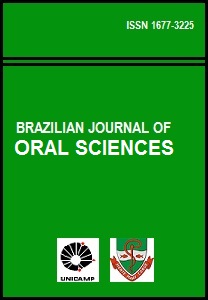Abstract
Aim: To test the hypothesis that there is no difference in the cytotoxicity among natural latex elastics of different manufacturers using a L929 cell line culture. Methods: Different latex intraoral elastics (I.D. = 5/16", 4.5 oz.) were tested. The sample was divided into 7 groups of 15 elastics each: Group AO (American Orthodontics), Group GAC (GAC International), Group TP (TP Orthodontics), Group AD (Aditek), Group AB (Abzil), Group MO (Morelli) and Group UN (Uniden). Cytotoxicity assays were performed by using cell culture medium containing L-929 line cells (mouse fibroblast). The cytotoxicity was evaluated by using the “dye-uptake” test, which was employed at two different moments (1 and 24 h). Data were compared by ANOVA and Tukey’s test (P < 0.05). Results: The results showed a significant difference (P < 0.05) between all groups and the group CC (cell control) at 1 and 24 h. Groups AD, AB, MO and UN were noticeably more cytotoxic than the groups AO, GAC and TP at 1 h. After 24 h, a significant decrease in cell viability was observed in all groups. Conclusions: Intraoral elastics from American Orthodontics, GAC and TP Orthodontics trademarks induced less cell lysis than Aditek, Abzil, Morelli and Uniden trademarksThe Brazilian Journal of Oral Sciences uses the Creative Commons license (CC), thus preserving the integrity of the articles in an open access environment.
Downloads
Download data is not yet available.

